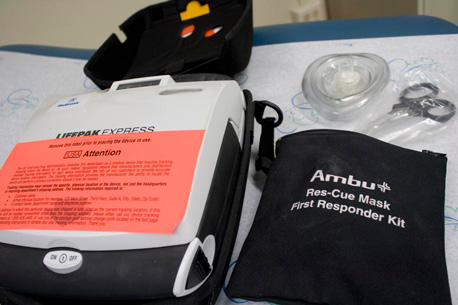By: Ashley Richards (Whetstone Contributor)
Two school officials are trying to get up to five more automated external defibrillators (AEDs) placed in several “critical locations†across campus at an estimated cost of $8,500.
An AED is used to revive someone who is in cardiac arrest through electric shock.
Wesley College currently has four.
The proposal was sent to the Student Government Association by Amanda Kinkade, coordinator of intramural sports & recreation, and Jill Maser, director of health services, who are asking the SGA to pay for it. The devices cost about $1,700 each.
“AEDs are helpful and crucial to campus life in cases of cardiac arrest because they will make the difference between life and death before first responders get to the scene,â€Â said Bryan Zarou, SGA vice president.
Zarou and SGA president Tanner Polce said the SGA will not be paying for the devices.
According to Kinkade and Maser, “critical locations†on campus include Wesley West, the main floor of the College Center, Scott D. Miller Stadium and the Security Office.
The two also said that Christine McDermott, assistant director of disability support, recommended the campus should have an AED in every residence hall, along with every building on campus, including Cannon, Slaybaugh, Parker, Dulany and Budd.
“AEDs are an important tool in saving a life, if a shock is required,†Maser wrote in the letter. “AEDs should be installed to ensure response within 3-5 minutes.â€
Even so, Maser said, the college has yet to need one.
“We have never had to use the existing AEDs on campus,†Maser said. “We are also very fortunate that our campus is so close to the city’s emergency response facilities and hospital.â€
Kent General Hospital is less than a mile away.
Maser said there are 4 AEDs on campus – although she was unsure where some of them were.
“There is one in the wellness center and the trainer has two,†Maser said. “The nursing department has the fourth. The AED is automated and will assist non-medical person with the device.â€
According to OSHA (Occupational Safety and Health Administration), using AEDs within three to four minutes of a sudden cardiac arrest can contribute to a 60 percent survival rate.




